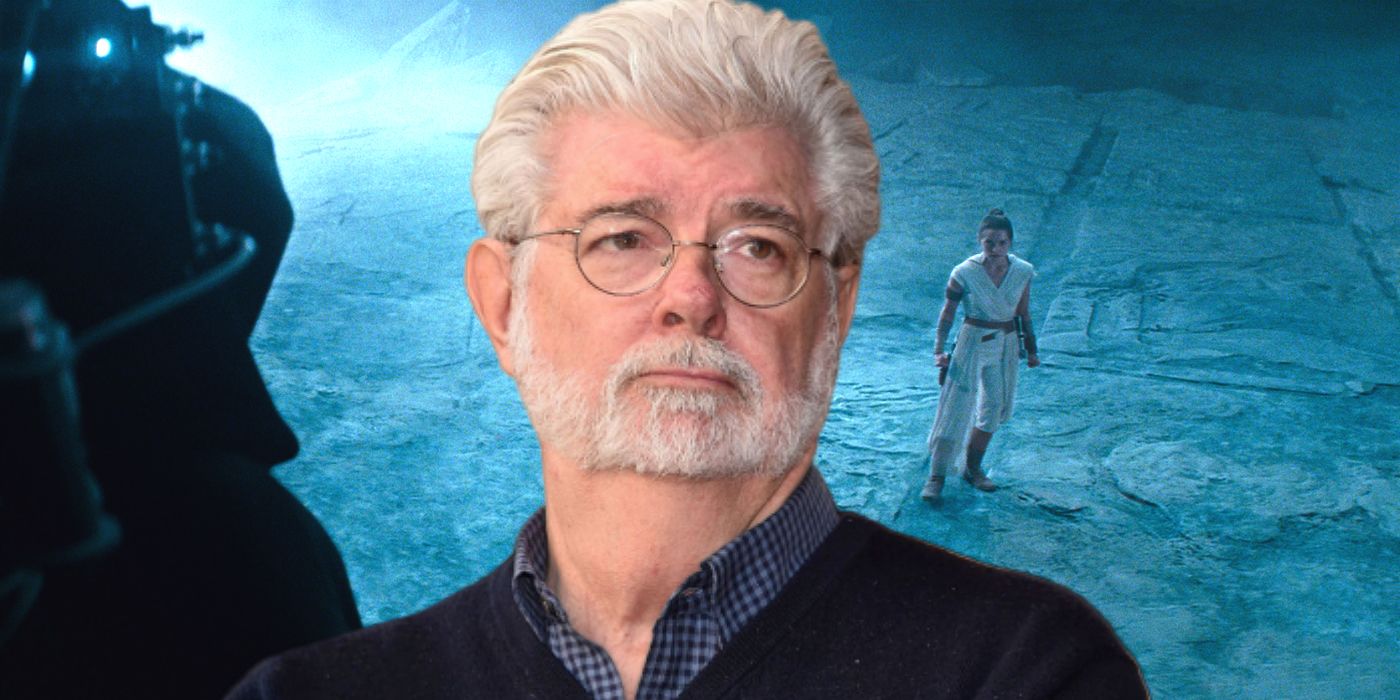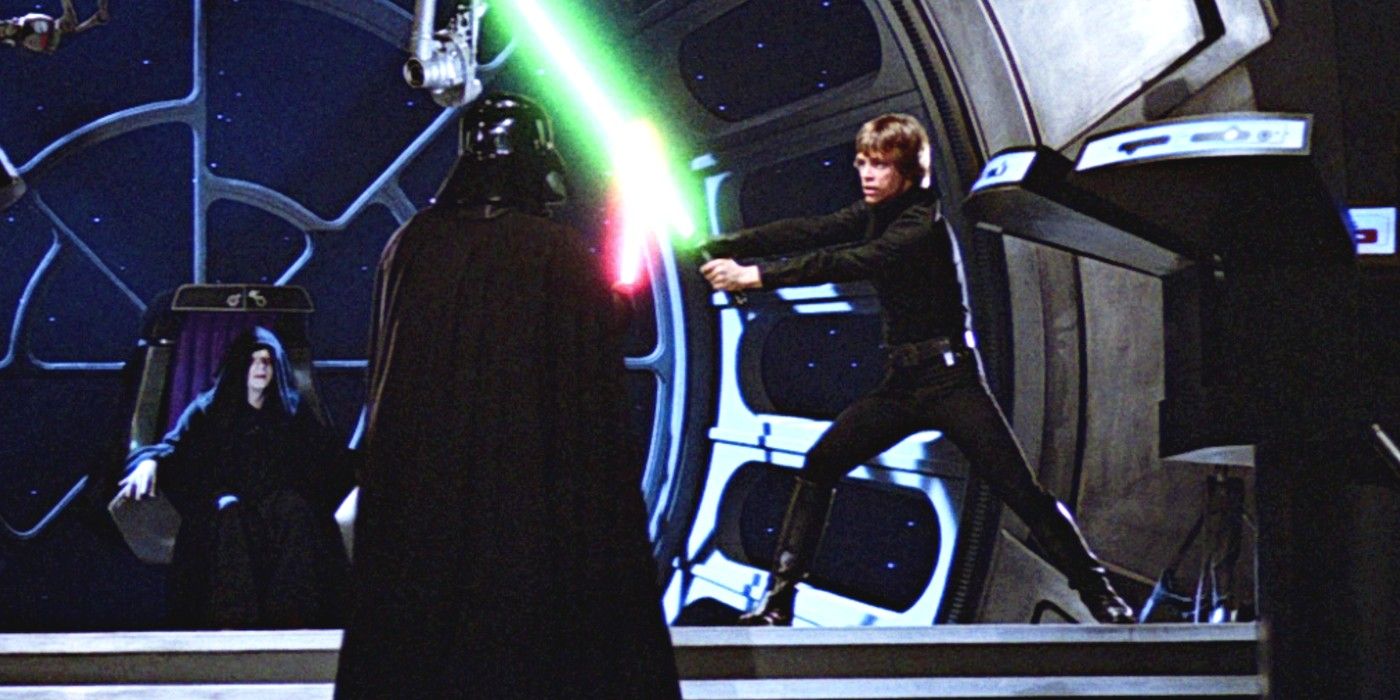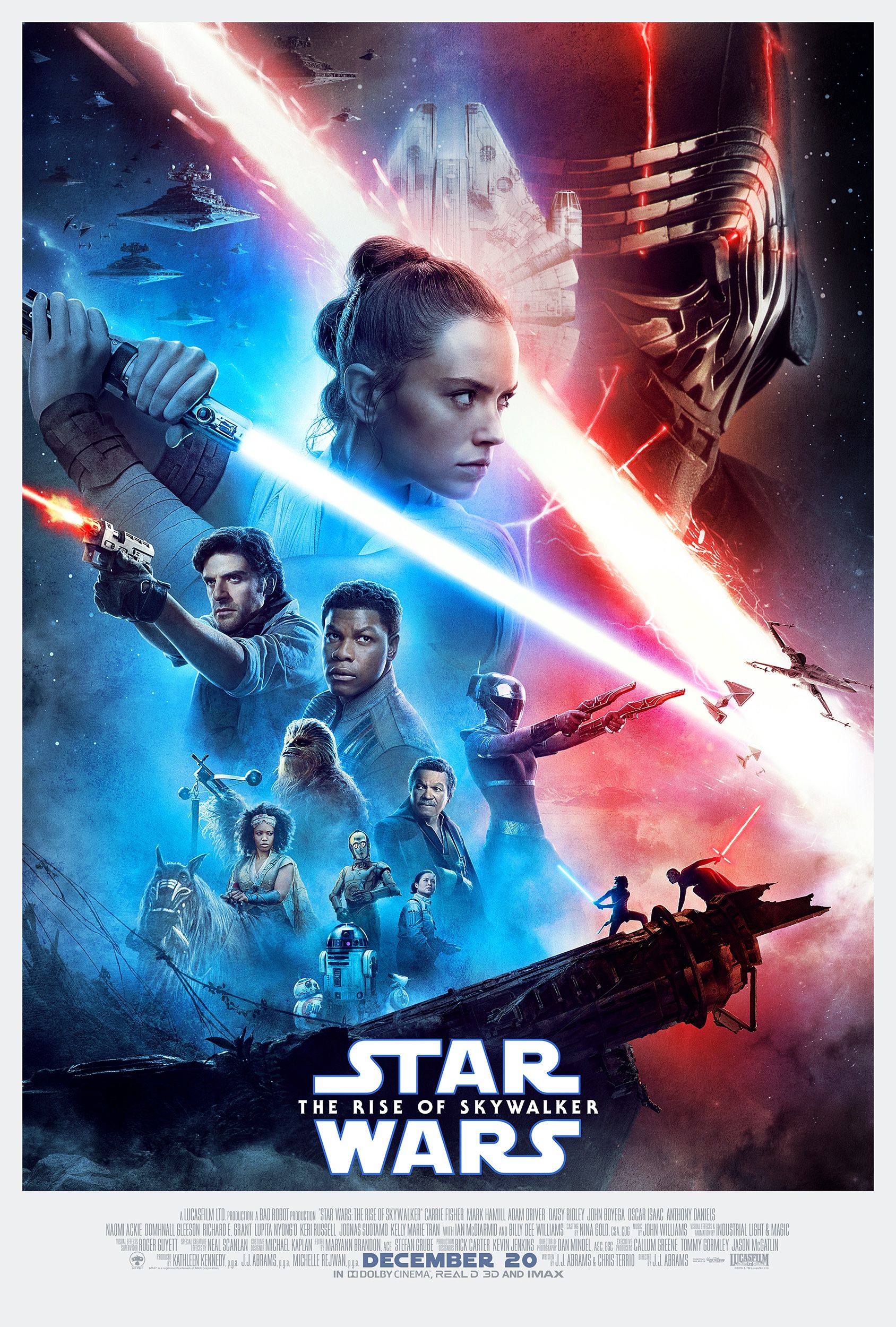Warning: Contains SPOILERS for Star Wars: The Rise of Skywalker.
Star Wars: The Rise of Skywalker sees Rey’s (Daisy Ridely) climatic fight with Emperor Palpatine (Ian McDiarmid) re-purpose an old idea from George Lucas’ original trilogy. Star Wars itself is no stranger to self-referentiality. The saga has a long history of mimicking its own shots, scenes and plot structures, in both Lucas' series and in every new release from Disney. For example, Darth Vader’s Mustafar fortress in Rogue One: A Star Wars Story will be familiar to fans of Ralph McQuarrie’s concept art for the saga, because it was originally considered for a key location during production of The Empire Strikes Back. Another of McQuarrie’s pieces also depicted a mock-up of Palpatine’s spiny throne, which would not appear until The Rise of Skywalker where, in one of the movie’s pivotal sequences, another old idea has resurfaced.
Though Rey and Ben Solo both eventually take a stand against Sheev Palpatine at the end of Star Wars: The Rise of Skywalker, the resurrected Sith Lord overpowers them with his mastery of the Force, before he launches a devastating single-handed attack on the entire Resistance fleet. Depleted and despondent, Rey calls out to the spirits of the Jedi who came before her – something she had attempted and failed to do near the beginning of the movie. This time, however, the voices of her fellow warriors respond through the Force, bolstering her confidence and her strength enough to rise and confront the Emperor one final time.
This kind of spiritual showdown between Palpatine and one Jedi (with help from their dead fellows) is not actually a new idea. Certainly, a cursory glance at the 1981 draft script for Return of the Jedi reveals that George Lucas originally intended to bring back several deceased Jedi during Luke Skywalker’s (Mark Hamill) last stand aboard the Second Death Star. In the script, the throne room battle between Luke, Darth Vader and Palpatine unfolds in a similar fashion to the finished movie. However, when the Palpatine conjures Force Lightning against the young Jedi Knight, the spirits of Masters Obi-Wan Kenobi and Yoda come to his aid, and form a deflective shield to protect Luke from the deadly surges. Though the attack has been thwarted, the Emperor comments that Luke’s “friends from the netherworld” will not be able to help him indefinitely.
Whilst Force ghosts have played a large part in Star Wars ever since The Empire Strikes Back, Lucas would not return to the concept of the Force netherworld until the prequel trilogy, and he would eventually jettison the idea of their mid-battle assistance entirely. Director J.J. Abrams and writer Chris Terrio obviously could not resist using this idea in their making of The Rise of Skywalker - albeit with a few notable tweaks. Based on Lucas’ original draft, the visages of Yoda and Obi-Wan would have appeared every time Palpatine’s lightning struck their protective barrier. Conversely, Luke Skywalker’s spirit might have manifested for Rey on Ahch-To, but Luke and his fellow fallen Jedi do not physically emerge to encourage or defend Rey. Instead, as she gazes through her grandfather's lightning upon the blanket of stars, the Jedi’s echoing voices are heard spurring her on.
This might seem rather disappointing for those who had hoped to see some famous faces return, yet this reworking proves to be one of the sequence’s key strengths. It ensures the story can remain focused on Rey without any distracting cameos from household names. It also allows Abrams to improve upon Lucas’ plans, since it is not just Obi-Wan and Yoda who return to help Rey, but an assortment of other figures from Star Wars’ various eras and animated series. Among the cavalcade of cameos in Star Wars: The Rise of Skywalker, the stirring voices of Qui-Gon Jinn (Liam Neeson), Anakin Skywalker (Hayden Christensen), and Mace Windu (Samuel L. Jackson) can be heard from the prequel trilogy, with Kanan Jarrus (Freddie Prinze Jr.) and Ashoka Tano (Ashley Eckstein) joining them from Star Wars Rebels and The Clone Wars respectively.
It’s a simple yet highly effective choice, since it pays tribute to the various Star Wars stories and eras, gifting this battle the sense of importance that it rightly deserves. As the longstanding feud between the Jedi and Sith comes to a head, this sequence will surely be recognized as not just one of Star Wars: The Rise of Skywalker’s most powerful sequences, but of the entire saga – despite the rather mixed response to the film as a whole.



